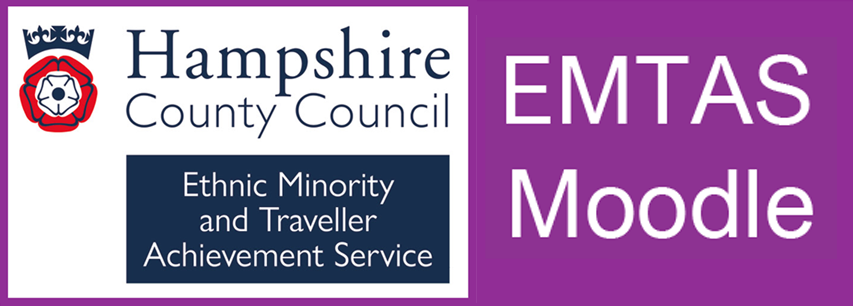Report for Hampshire EMTAS on the Impact of the Young Interpreter Scheme (Page, 2024)
Introduction
This report investigated the impact of the Young Interpreter Scheme (YIS) on the development of empathy, intercultural competence, and metalinguistic awareness among primary school children. The YIS, developed by Hampshire Ethnic Minority and Traveller Achievement Service (EMTAS), aims to support English as an Additional Language (EAL) learners by training their peers to assist them in navigating the school environment. Given the increasing linguistic diversity in classrooms across England (DfE, 2023), this research provides timely insights into how structured peer mentoring can benefit both EAL students and the Young Interpreters themselves.
The study employed a longitudinal design, with 30 Young Interpreters and 29 control students from four primary schools in England, aged between 7 and 11 years. Data were collected at three intervals: before YI training, immediately after training, and six months later. This report summarises the findings in three key areas: empathy, intercultural competence, and metalinguistic awareness.
Empathy
Empathy is a crucial skill for developing interpersonal relationships and fostering inclusive environments in schools (Eisenberg, Eggum, & Di Giunta, 2010). The YIS training included activities designed to enhance empathy among participants by encouraging them to understand and share the feelings of their peers, particularly those facing the challenges of learning in a new language.
Findings: The study found no immediate significant improvements in overall empathy levels following the YIS training. However, there were significant gains in affective empathy, which is the ability to feel and share another person's emotions, at the six-month follow-up (Rieffe, Ketelaar, & Wiefferink, 2010). Cognitive empathy, or the understanding of another’s perspective, showed positive trends but did not significantly differ between the YI and control groups immediately after training. Qualitative data supported these findings, with Young Interpreters demonstrating an increased ability to articulate and understand the emotions of the peers they supported over time.
Discussion: The delayed improvement in empathy suggests that the benefits of the YIS training may manifest gradually as children apply their skills in real-world contexts. The importance of ongoing interaction and reflection in enhancing empathy is emphasised, with a recommendation for continued support and reinforcement of empathy-building activities within the YIS framework (Heikamp, Phalet, Van Laar, & Verschueren, 2020).
Intercultural Competence
Intercultural competence, which involves understanding and appreciating cultural differences, is increasingly important in the diverse classrooms of today (Banks, 2006). The YIS aims to foster this competence by exposing students to different cultures and teaching them how to support peers from diverse backgrounds.
Findings: Participants showed increased awareness and understanding of cultural differences after completing the YIS training (Byram, 1997). Themes such as 'Exploring Cultural Contrasts' and 'Fostering a Supportive Environment' emerged from qualitative analysis, indicating that Young Interpreters were better able to navigate and appreciate cultural differences (Heineke & Vera, 2022). Additionally, there was a notable increase in the children’s curiosity and openness towards learning about other cultures, reflecting a deeper engagement with the values of diversity and inclusion.
Discussion: The YIS effectively promotes intercultural competence, with participants demonstrating improved cultural sensitivity and awareness. These findings suggest that the YIS contributes to a more inclusive school environment by equipping children with the skills to support and embrace diversity (Hampshire, 2014). This underlines the scheme’s role not only in supporting EAL learners but also in fostering a culturally rich and empathetic school community.
Metalinguistic Awareness
Metalinguistic awareness, the ability to reflect on and manipulate language structures, is crucial for language learning, especially in multilingual settings (Nation & Snowling, 2000). The YIS includes activities designed to enhance this awareness, such as tasks involving word reordering and explaining vocabulary, which focus on syntactic and morphological aspects of language.
Findings: The study found no immediate significant changes in metalinguistic awareness following YI training. However, over time, children’s performance in tasks requiring syntactic and morphological awareness improved, particularly among those with stronger cognitive abilities and vocabulary at baseline (Demie, 2018). Qualitative feedback from participants indicated that the YIS encouraged deeper thinking about language use and communication strategies.
Discussion: The gradual improvement in metalinguistic awareness suggests that the YIS’s impact in this area develops over time, likely as children continue to apply and refine their skills in diverse linguistic contexts (Flynn & Curdt-Christiansen, 2018). The importance of ongoing support and opportunities for Young Interpreters to practice these skills is highlighted, reinforcing the need for consistent linguistic engagement within the school environment (Flynn, 2019).
Conclusion and Recommendations
The findings from this study suggest that the Young Interpreter Scheme positively impacts children’s development of empathy, intercultural competence, and metalinguistic awareness, with these effects emerging gradually over time. For Hampshire EMTAS, this indicates that the YIS is a valuable tool for supporting EAL learners and fostering broader educational and social competencies among students.
Recommendations:- Ongoing Training and Support: Schools should
continue to provide training and opportunities for Young Interpreters to
apply their skills, maximising the benefits of the YIS (Tzani-Pepelasi et
al., 2019).
- Integration into School Culture: Schools are
encouraged to integrate YIS principles more deeply into their broader
culture to reinforce the values of empathy, cultural awareness, and
language sensitivity (Heikamp et al., 2020).
- Further Research: Additional research is
recommended to explore the long-term impacts of the YIS on both Young
Interpreters and EAL learners, with a focus on academic outcomes and
social integration (Cline, Crafter, & Prokopiou, 2014).
In conclusion, the Young Interpreter Scheme is a
valuable framework for supporting EAL learners and promoting essential social
and cognitive skills among primary school children. The evidence suggests that
with careful implementation and ongoing support, the YIS can significantly
contribute to creating a more inclusive and supportive learning environment.
References
Banks, J. A. (2006). Diversity and citizenship education: Global perspectives. John Wiley & Sons.
Byram, M. (1997). Teaching and assessing intercultural communicative competence. Multilingual Matters.
Channon, S., Marsh, K., Jenkins, A., & Robling, M. (2013). Using motivational interviewing as the basis for a peer support programme in high school. Pastoral Care in Education, 31(1), 66-78. https://doi.org/10.1080/02643944.2012.731426
Cline, T., Crafter, S., & Prokopiou, E. (2014). Child language brokering in schools: A discussion of selected findings from a survey of teachers and ex-students. Educational & Child Psychology, 31, 34-45. https://oro.open.ac.uk/48377/
Demie, F. (2018). English language proficiency and attainment of EAL (English as second language) pupils in England. Journal of Multilingual and Multicultural Development, 39(7), 641-653. https://doi.org/10.1080/01434632.2017.1420658
Department for Education (DfE). (2023). Schools,
pupils and their characteristics. London: Department for Education.
Retrieved from https://explore-education-statistics.service.gov.uk/find-statistics/school-pupils-and-their-characteristics
Earley, P. C., & Ang, S. (2003). Cultural intelligence: Individual interactions across cultures. Stanford University Press.
Eisenberg, N., Eggum, N. D., & Di Giunta, L. (2010). Empathy-related responding: Associations with prosocial behavior, aggression, and intergroup relations. Social Issues and Policy Review, 4(1), 143-180. https://doi.org/10.1111/j.1751-2409.2010.01020.x
Flynn, N. (2019). Teachers and Polish children: Capturing changes in the linguistic field. British Journal of Sociology of Education, 40(1), 65-82. https://doi.org/10.1080/01425692.2018.1481366
Flynn, N., & Curdt-Christiansen, X. L. (2018). Intentions versus enactment: Making sense of policy and practice for teaching English as an additional language. Language and Education, 32(5), 410-427. https://doi.org/10.1080/09500782.2018.1475484
Hampshire, E. (2014). Hampshire Young Interpreter Scheme Guidance Pack. Hampshire County Council. Retrieved from https://www.hants.gov.uk/educationandlearning/emtas
Heikamp, T., Phalet, K., Van Laar, C., & Verschueren, K. (2020). To belong or not to belong: Protecting minority engagement in the face of discrimination. International Journal of Psychology, 55(5), 779-788. https://doi.org/10.1002/ijop.12706
Heineke, A. J., & Vera, E. M. (2022). Beyond language and academics: Investigating teachers’ preparation to promote the social-emotional well-being of emergent bilingual learners. Journal of Teacher Education, 73(2), 145-158. https://doi.org/10.1177/00224871211027573
Nation, K., & Snowling, M. J. (2000). Factors influencing syntactic awareness skills in normal readers and poor comprehenders. Applied Psycholinguistics, 21(2), 229-241. https://doi.org/10.1017/S0142716400002046
Rieffe, C., Ketelaar, L., & Wiefferink, C. (2010). Assessing empathy in young children: Construction and validation of an Empathy Questionnaire (EmQue). Personality and Individual Differences, 49, 362-367. https://doi.org/10.1016/j.paid.2010.03.046
Tzani-Pepelasi, C., Ioannou, M., Synnott, J.,
& McDonnell, D. (2019). Peer support at schools: The buddy approach as a
prevention and intervention strategy for school bullying. International
Journal of Bullying Prevention, 1(2), 111-123. https://doi.org/10.1007/s42380-019-00011-z
Last modified: Monday, 9 September 2024, 2:50 PM

